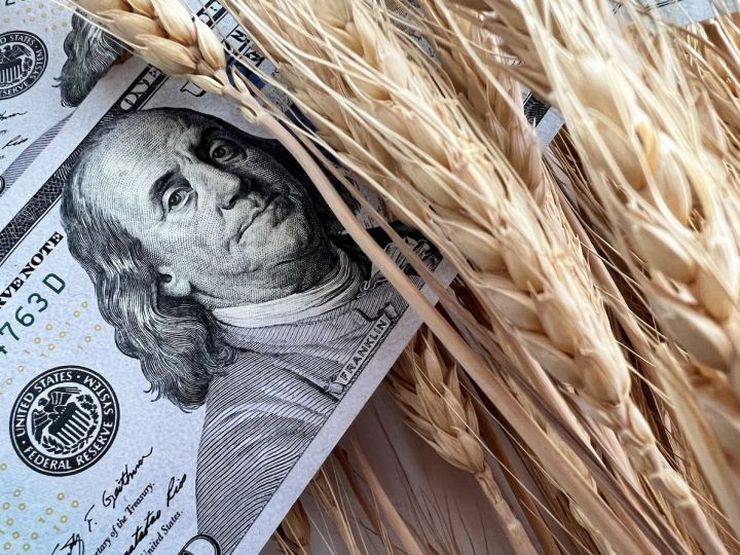Wheat price rises to highest since July 2023 on shortage fears

Wheat prices on the stock exchange soared to their highest level since July last year. The growth was aided by lower forecasts for the wheat harvest in Russia in 2024-2025 amid abnormal weather conditions
Wheat futures for delivery in July rose by 2.7% to $7.17 per bushel (about $263.5 per ton, one bushel of wheat is equal to 27.2 kg, in a ton – 36.744 bushels), according to trading data on the Chicago Mercantile Exchange (CBOT) as of 11:02 Kyiv time. Wheat prices rose to the maximum since July 28, 2023.
The growth of quotations was caused by concerns about the reduction of supplies to the world market of Russian grain, Bloomberg writes. On the eve of the Institute for Agricultural Market Conditions (IKAR) revised its expectations for the wheat harvest in Russia in 2024-2025 due to unfavorable weather conditions. The organization expects production of 83.5 million tons in 2024, while earlier the forecast was 91 million tons.
Two consecutive record wheat harvests in Russia have supported global supplies and contributed to a decline in prices from the peaks seen in 2022. Russia harvested a record 157.6 million tons of grain in 2022 and 144.9 million tons of grain in 2023. May frosts this year affected the south of Russia, which led to the death of part of the crops. Now, traders fear a reduction in grain supplies from Russia to the world market.
According to Reuters calculations, over the past five weeks the nearest futures for wheat on the exchange in Chicago rose in price by almost 24%. Drought and unfavorable weather conditions for wheat crops in the Black Sea region are expected to continue, according to forecasts from U.S. space operator Maxar Technologies.
In the current decade, the decline in world wheat stocks continues: if in 2020 they amounted to almost 300 million tons, in 2023 – 271 million tons, and for 2024-2025 analysts predict a decline to 257 million tons in each of the years. Such data was cited by Bloomberg with reference to the U.S. Department of Agriculture. “Demand has increased, stocks around the world remain tight and new crop problems are intensifying,” James Bolsworth, managing director of UK-based analytics firm CRM AgriCommodities, told the agency.
Read also
Wheat in Southern Brazil Impacted by Dry Weather and Frosts
Oilseed Industry. Leaders and Strategies in the Times of a Great Change
Black Sea & Danube Region: Oilseed and Vegoil Markets Within Ongoing Transfor...
Serbia. The drought will cause extremely high losses for farmers this year
2023/24 Safrinha Corn in Brazil 91% Harvested
Write to us
Our manager will contact you soon



